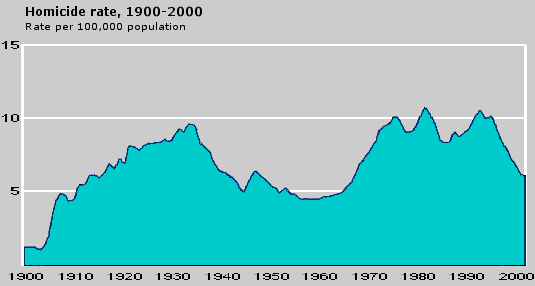 Reference
Reference
 Demographics
Demographics
 Death Rate
Death Rate
Don's Home
 Reference
Reference
 Demographics
Demographics
 Death Rate
Death Rate
| Contact |
Under Construction 
Contents: World | US | Murders| Life Expectancy World Date Rate by country at: UMSL According to the World Health Organization's 1997 World Health Report, life expectancy averages 64 years in the developing nations and is approaching 80 years in some industrial nations.
Causes of Death for Developing Countries (1990) 1 Lower Respiratory Infections (1) 2 Heart Disease 3 Strokes & Lung Cancer 4 Diarrheal Diseases 5 Conditions During Perinatal Period 6 Tuberculosis 7 Chronic Obstructive Pulmonary Disease (2) 8 Measles 9 Malaria 10 Traffic Accidents (1) Lower Respiratory Infections - Pneumonia, influenza and acute bronchitis, Asthma (Sometimes COPD (below) is included in lower Respiratory Infections. TB may also be included in some Stats.) (2) Chronic obstructive pulmonary disease (COPD) is an umbrella term used to describe airflow obstruction that is associated mainly with emphysema and chronic bronchitis. See Population Page for history of Death Rates. | |||||||||||||||||||||||||||||||||||||||||||||||||||||||||||||||||||||||||||||||||||||||||||||||||||||||||||||||||||||||||||||||||||||||||||||||||||||||||||||||||||||||||||||||||||||||||||||||||||||||||||||||||||||||||||||||||||||||||||||||||||||||||||||||||||||||||||||||||||||||||||||||||||||||||||||||||||||||||||||||||||||||||||||||||||||||||||||||||||||||||||||||||||||||||||||||||||||||||||||||||||||||||||||||||||||||||||||||||||||||||||||||||||||||||||||||||||||||||||||||||||||||||||||||||||||||||||||||||||||||||||||||||||||||||||||||||||||||||||||||||||||||||||||||||||||||||||||||||||||||||||||||||||||||||||||||||||||||||||||||||||||||||||||||||||||||||||||
|
USA 2001 Deaths per 100,000 pop.
|
Estimated risk for an American over a 50-year period.
| ||||||||||||||||||||||||||||||||||||||||||||||||||||||||||||||||||||||||||||||||||||||||||||||||||||||||||||||||||||||||||||||||||||||||||||||||||||||||||||||||||||||||||||||||||||||||||||||||||||||||||||||||||||||||||||||||||||||||||||||||||||||||||||||||||||||||||||||||||||||||||||||||||||||||||||||||||||||||||||||||||||||||||||||||||||||||||||||||||||||||||||||||||||||||||||||||||||||||||||||||||||||||||||||||||||||||||||||||||||||||||||||||||||||||||||||||||||||||||||||||||||||||||||||||||||||||||||||||||||||||||||||||||||||||||||||||||||||||||||||||||||||||||||||||||||||||||||||||||||||||||||||||||||||||||||||||||||||||||||||||||||||||||||||||||||||||||||
(3) Chronic lower respiratory diseases include different kinds of bronchitis, emphysema (16,418), asthma, bronchiectasi and other Chronic Obstructive Lung Diseases (COLD). Sometimes refered to a Pulmonary disease.
(4) Deaths from Medical Errors and Adverse Drug Reactions are not reported as a separate category by the CDC. They categorize these deaths elsewhere (not sure where), so this total should not be added to calculate a total death rate.
Dr. Mercola reports 120,000 deaths. The Institute of Medicine reported Medical Mistakes account from 44-98,000 deaths per year. (5) Although blood poisoning can result from infected surgical incisions, wounds, or burns, other types of infection can release enough bacteria into your blood to create septicemia. Such conditions may range from urinary tract infections or pneumonia to boils and abscessed teeth or gum problems. It may precede or coincide with infections of the bone (osteomyelitis), central nervous system (meningitis), or other tissues.
(6) Alcohol, drug & firearms related deaths are reported in "National Vital Statistics Reports" (see above), but are counted in other categories (e.g. firearms is lumped into all homicides, Alcohol may be included in liver disease, auto accidents, etc.) .
(7) The "National Vital Statistics Reports" from the CDC reported
Alcohol Related deaths 19,423 (0.8%) [I couldn't find what the difference between Alcohol Consumption and Alcohol Related was.
(8) Obesity = poor diet and physical inactivity. In March 2004 the Journal of the American Medical Association (JAMA) published a CDC report that said poor diet and physical inactivity caused 400,000 deaths in 2000, up from 300,000 a decade earlier, and it would surpass tobacco as the leading cause of death in 2005, but in November they reported that the study was flawed and in the January 19, 2005 issue they ran a correction in the JAMA saying the number was 365,000.
(9) Smoking deaths should decrease as fewer people take up smoking. See: Chronic Disease Prevention - Improving Nutrition and Increasing Physical Activity and Healthy People 2000 , Chronic Disease Overview, Chronic Diseases as Causes of Death at the CDC. The National Cancer Institute estimates that tobacco accounts for 30% of cancers, and dietary factors account for another 35%.
See Also: CureResearch.com and
Hu's Index Death Rate Murders
Source: Kearl's Death Index, FBI - Uniform Crime Reports - Crime in the United States - 2002 See: Top 25 Cities for Murder. Terrorism, Serial Killers, Mass Murderers (Schools, Workplace, Cults, Other), Gangs and Organized Crime. Age StatisticsAccidents and violence now account for two-thirds of all deaths of Americans one to nineteen years-of-age.Gunshot wounds are the second leading cause of death for all people aged 10-34. National Center for Health Statistics, 1993
Death Rate by Age Life Expectancy by Age US 2001 (All races) | |||||||||||||||||||||||||||||||||||||||||||||||||||||||||||||||||||||||||||||||||||||||||||||||||||||||||||||||||||||||||||||||||||||||||||||||||||||||||||||||||||||||||||||||||||||||||||||||||||||||||||||||||||||||||||||||||||||||||||||||||||||||||||||||||||||||||||||||||||||||||||||||||||||||||||||||||||||||||||||||||||||||||||||||||||||||||||||||||||||||||||||||||||||||||||||||||||||||||||||||||||||||||||||||||||||||||||||||||||||||||||||||||||||||||||||||||||||||||||||||||||||||||||||||||||||||||||||||||||||||||||||||||||||||||||||||||||||||||||||||||||||||||||||||||||||||||||||||||||||||||||||||||||||||||||||||||||||||||||||||||||||||||||||||||||||||||||||
| |||||||||||||||||||||||||||||||||||||||||||||||||||||||||||||||||||||||||||||||||||||||||||||||||||||||||||||||||||||||||||||||||||||
|
Trends over TimeThe life expectancy at birth in the US has risen from 47 years in 1900 to 77 years in 2000. Source: Institute for Public Administration at U. Delaware
See the Population Page for.
| |||||||||||||||||||||||||||||||||||||||||||||||||||||||||||||||||||||||||||||||||||||||||||||||||||||||||||||||||||||||||||||||||||||
 See: WorldBank.org
The Boston College Report Why is life expectancy so low in the US says of the low US expectancy: Life Expectancy at birth - (sample of developing countries)
|
| ||||||||||||||||||||||||||||||||||||||||||||||||||||||||||||||||||||||||||||||||||||||||||||||||||||||||||||||||||||||||||||||||||||
|
A 2000 World Health Organization (WHO) report calculated healthy life expectancy for babies born in 1999 based upon an indicator developed by WHO scientists, Disability Adjusted Life Expectancy (DALE). They say: "In terms of DALE, the top 10 nations are Japan, 74.5; Australia, 73.2 years; France, 73.1; Sweden, 73.0; Spain, 72.8; Italy, 72.7; Greece, 72.5; Switzerland, 72.5; Monaco, 72.4; and Andorra, 72.3. The US ranked 24th with an average of 70 years of healthy life. They attribute this to:
| |||||||||||||||||||||||||||||||||||||||||||||||||||||||||||||||||||||||||||||||||||||||||||||||||||||||||||||||||||||||||||||||||||||
|
Real Age.com - Uses factors such as
general health, lifestyle, medical conditions, diet and nutrition,
stress, and exercise to determine your life expectancy.
See: World life expectancy charts at M White's site. US Deaths/Mortality at the National Center for Health Statistics (HCHS) at the CDC. Cancer Deaths (US) (2001) | |||||||||||||||||||||||||||||||||||||||||||||||||||||||||||||||||||||||||||||||||||||||||||||||||||||||||||||||||||||||||||||||||||||
| |||||||||||||||||||||||||||||||||||||||||||||||||||||||||||||||||||||||||||||||||||||||||||||||||||||||||||||||||||||||||||||||||||||
|
Source: National Vital Statistics Reports - Vol. 51, No. 5 www.cdc.gov/nchs/data/nvsr/nvsr51/nvsr51_05.pdf
Accidents See: See Causes of Death at UKY, Cure Research, Death Toll from Disasters, War Death Rates at: DisasterCenter.com Hu's Index Death Rate World Population Growth. US Deaths/Mortality at the National Center for Health Statistics (HCHS) at the CDC. "Worldwide Study Finds Big Shift in Causes of Death" LA Times, 1996 Transportation Death Rate (Auto, Train, Plane) PreventionAuto Accidents1/3 of all accidents occur at intersections. See VEHICLE & ROAD SAFETY at State Farm. From: http://environmentalet.hypermart.net/env1100/populationproblems.htm Stress I mentioned above that in post-industrial society, population stress outweigh starvation and infectious disease as a mortality factors problems with violence and psychological/physiological freakout can be seen in rats that are overcrowded in the lab. a. Environmental influences
Return to Reference | |||||||||||||||||||||||||||||||||||||||||||||||||||||||||||||||||||||||||||||||||||||||||||||||||||||||||||||||||||||||||||||||||||||